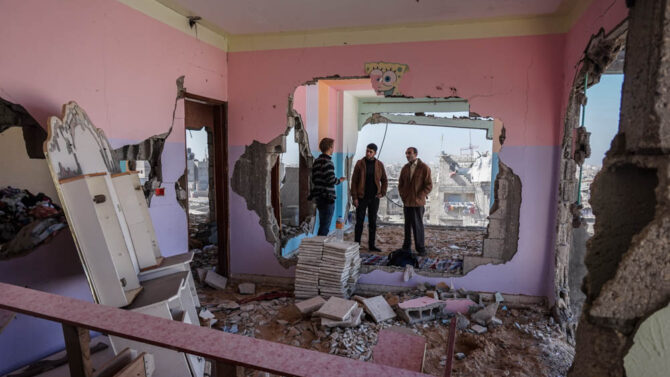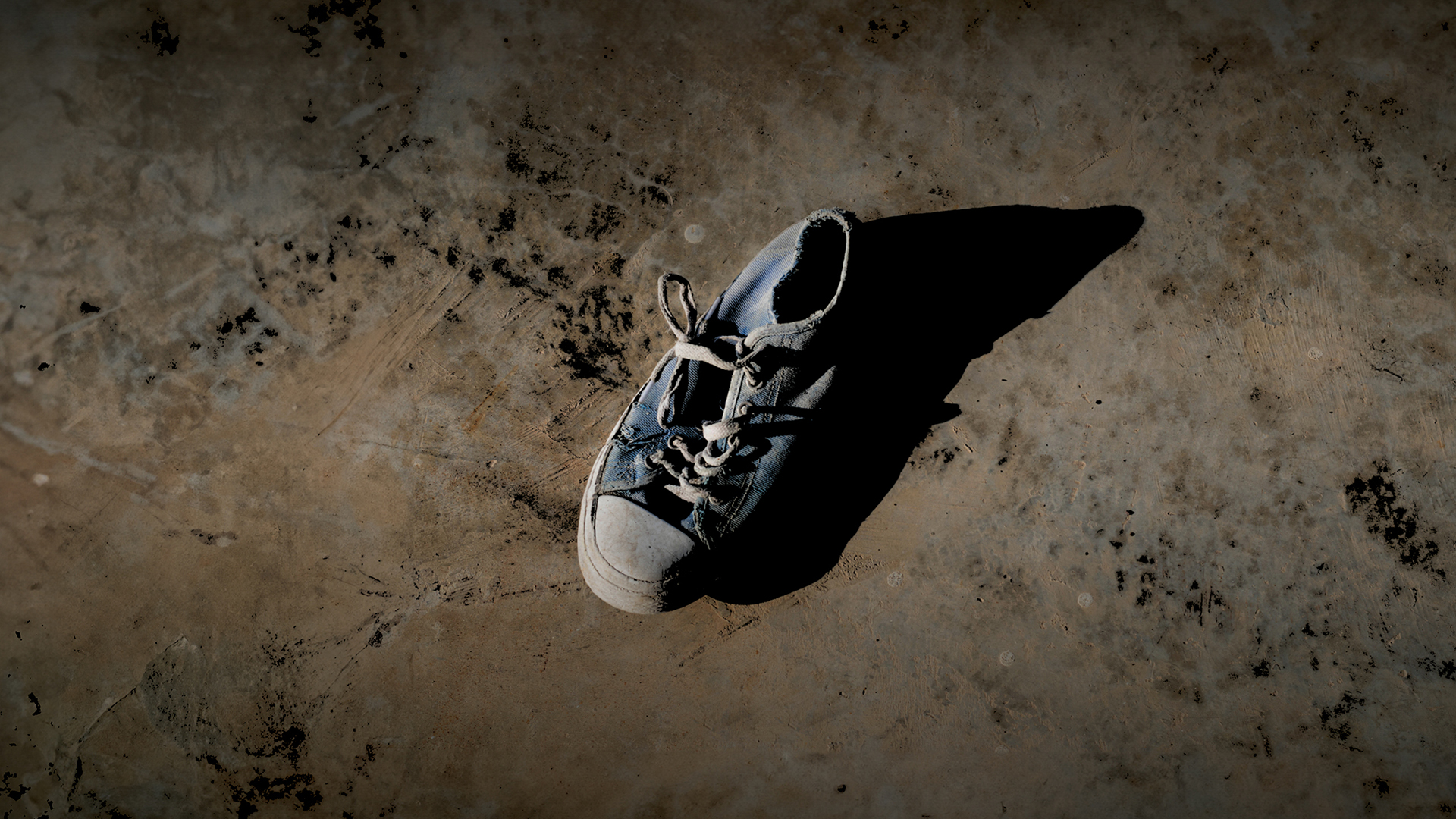More children have been killed in 49 days of war in Gaza than are killed in all conflicts on the planet annually
This article, published by iMEdD, is available for republication under a Creative Commons license.
More than 6,000 children have been killed in 49 days of war in the Gaza Strip according to the UN Office for the Coordination of Humanitarian Affairs (OCHA). They have been hit by air strikes, trapped under building rubble and maimed by rockets, fired by the Israeli army following the unprecedented attack by Hamas on October 7, which marked the beginning of this conflict. At the same time, the number of injured Palestinians is estimated at over 35,000 with 75% of them being women and children, while the number of missing children remains uncertain.
For the last 15 years, children in Gaza have been living in fear and constant uncertainty. They have already experienced 5 major wars since 2008 and practically, those who are now 17 years old have spent most of their lives amidst hostilities.
On average, a child is killed every 10 minutes in Gaza
Tedros Adhanom Ghebreyesus, Director World Health Organization
According to UNICEF, children make up about half of the total population of the region. “Inside the Strip, there is nowhere safe for Gaza’s one million children to turn,” said Catherine Russell, UNICEF Executive Director, during a visit to the region almost five weeks after the beginning of the conflict. “I once again call on all parties to ensure that children are protected and assisted, as per international humanitarian law.”
UN data on the number of Palestinians and Israelis killed or injured since 2008 in the occupied Palestinian territories and Israel, as a result of the occupation and the conflict, show that since October 7, approximately six times as many children have been killed as the total number of children killed since 2008.
Fragments from Gaza after the 2014 war

In late 2014, I traveled to the Gaza Strip on assignment for a press rights organization that no longer exists.
Catherine Russell’s remarks at the UN Security Council briefing on November 22 also point out that “the number of deaths in the present crisis has far surpassed the total number of deaths during previous escalations. For comparison, a total of 1,653 children were verified as killed in 17 years of monitoring and reporting of grave violations between 2005 and 2022.”
The humanitarian organization Save the Children has revealed that the number of child deaths in Gaza (as reported by the official authorities) has exceeded the annual number of children killed in war conflicts worldwide over the last 4 years. According to the latest four annual reports of the UN Secretary-General on Children and Armed Conflict, a total of 2,985 children were killed across 24 countries in 2022, 2,515 in 2021 and 2,674 in 2020 across 22 countries. In 2019, 4,019 children were killed across 19 countries.
Inside the Strip, there is nowhere safe for Gaza’s one million children to turn
Catherine Russell, UNICEF Executive Director
Israel has unleashed in Gaza, one of the most densely populated areas on the planet, more than 25,000 tons of explosives since the beginning of the war, the equivalent of two nuclear bombs, according to the Euro-Med Human Rights Monitor.

The Gaza Strip has a population of approximately 2.1 million people (as of 2023) according to The World Factbook of the CIA and the UNRWA. However, many media report it to be 2.2 or even 2.3 million.
These 2.1 million people live in an area of 360 square kilometers (~140 sq. miles), which corresponds to a population density of 5,834 people per square kilometer (15,000 people per sq. mile).
Investigating war crimes: What is legal in war?

This chapter by GIJN lays out a basic overview of the laws that apply in armed conflict.
The assistance of doctors and humanitarian organizations
“We are nearly sure that we are alone now. No one hears us... The problem is to be sure that we can evacuate the neonatal patients because we have about 37 to 40 premature babies," testifies Dr Mohammed Obeid on November 11, a surgeon at Al-Shifa Hospital and member of the Médecins Sans Frontières, who tirelessly stand by their patients risking their own lives.
Some of the babies died when their incubators stopped working due to lack of fuel, as the hospital’s medical services collapsed during an Israeli army offensive in the city of Gaza. In the days that followed, UNICEF in cooperation with the World Health Organization (WHO), the UN Office for the Coordination of Humanitarian Affairs (OCHA) and the Palestine Red Crescent Society (PRCS) carried out an operation to rescue 31 premature babies and transport them to a hospital in the south under extremely dangerous conditions.
Families in the region have been counting victims at such a high rate that some parents in Gaza have gone so far as to write their children’s names on their bodies so they can be identified, told CNN Dr Abdul Rahman Al Masri, head of the emergency department at Al-Aqsa Martyrs Hospital. At the same time, medical professionals in Gaza, including Médecins Sans Frontières, have reported that the number of children without surviving family members arriving for medical treatment is so high that a new acronym has been coined to identify them –“WCNSF” (Wounded Child No Surviving Family), Reliefweb notes.
Doctors are forced to amputate many children and the conditions in which these operations are performed are inhumane; on the floor, in the corridors of hospitals, without anesthesia, without drugs and with families witnessing the horrible pain of the young patients. “You can’t imagine,” says Dr Obeid while describing the amputation surgery of a 9-year-old boy in front of his mother and sister.
One child’s death is one too many.
Jason Lee, Save the Children Country Director in the occupied Palestinian territory Jason Lee
“On average, a child is killed every 10 minutes in Gaza,” World Health Organization Director -General Tedros Adhanom Ghebreyesus told the UN Security Council on November 10, warning that nowhere and no one is safe.
Children who are not killed have been living without electricity for 43 days, have no access to clean water, food is scarce and they do not attend school. With 70% of Gaza’s population internally displaced according to the UN Office for the Coordination of Humanitarian Affairs (OCHA), more than 900,000 people are housed in UN Relief and Works Agency for Palestine Refugees (UNRWA) shelters, which now have no capacity to accept other people. Already due to overcrowding, approximately 700 people share one shower and 150 one toilet, and there is a significant spread of diseases such as acute respiratory disease and diarrhea due to ingestion of unsafe water, with children being the most vulnerable to these conditions.
The brief ceasefire reached on November 24 allowed the largest humanitarian aid convoy to enter Gaza for the first time in 48 days of war.
Impact on children’s mental health
A 2022 survey by the nonprofit Save the Children (conducted among children and young people aged 12-17) reports that four out of five children in the Gaza Strip suffer from depression, grief and fear.
The survey also found a huge increase in children who reported feeling fearful (84% compared to 50% in 2018), nervous (80% compared to 55%), sad or depressed (77% compared to 62%) and grieving (78% compared to 55%). It was also found that more than half of Gaza’s children have contemplated suicide and three out of five are self-harming.
The children of Israel
However, children have also been killed on the Israeli side. Since the violent Hamas attack on October 7, Israel has counted at least 33 child deaths based on OCHA figures drawn from official Israeli sources. During the attack, Hamas took about 240 hostages, including 39 children (aged 18 and under), the youngest of whom was only 10 months old, CNN reports. During the first release of hostages by Hamas on November 24, 4 of the 13 people returned to Israel were children aged 2, 4, 5 and 9 years old. The releases continued in the following days as part of the agreement between Israel and Hamas. By Tuesday 28 November, 31 children had returned to their homes. 9 more remained captive including the 10-month-old infant.
“One child’s death is one too many” as noted by Save the Children’s country director in the occupied Palestinian territory, Jason Lee.
